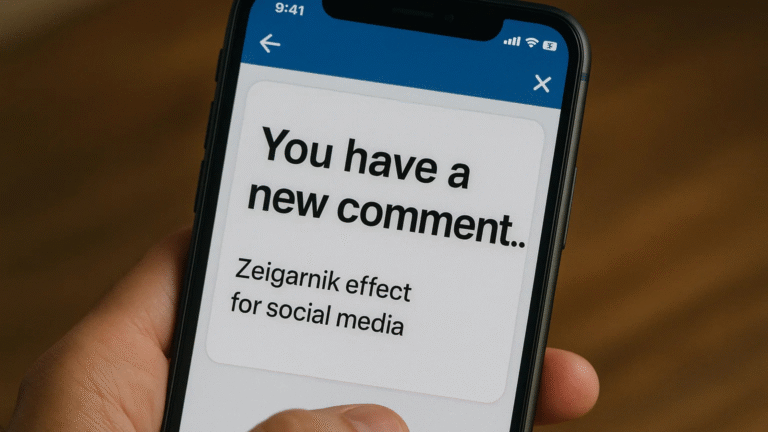Creating a future-proof content plan is more important than ever.
If you build a content strategy today that doesn’t adapt, it can feel outdated within months.
But a future-proof content plan stays relevant in 2025, 2026, and beyond, because it’s designed to ride long-term trends, not just temporary fads.
Furthermore, you don’t want that. What you do want is a future-proof content plan, a strategy so flexible, resilient, and well-anchored that it stays relevant even as platforms, audiences, and technology evolve.
In this blog, you’ll learn 7 trends you should bake into your content strategy now if you want your content plan to still work well in 2026.
No jargon, just clear steps you (or your team) can start using.

1. Generative AI + Smart Assistance
Trend summary: AI is no longer experimental in content creation — it’s becoming standard.
- In 2025, about 67% of marketers said they used AI to improve efficiency or quality in their content workflows. DemandSage
- WordStream reports that 88% of marketers say they already use some AI in their work, and many expect to expand it. WordStream+1
Why it helps future-proof your content plan: AI can help you scale, test variants, generate drafts, assist with ideation, and free your team’s energy for the parts machines can’t do well (emotion, insight, surprise).
But it’s not a magic wand, you need oversight, prompt strategy, and editing.
How to include this in your content plan:
- Build AI tooling into your workflow (for drafts, outlines, SEO suggestions).
- Use AI variants (A/B versions) and test which tone, length, or structure works better.
- Always have human review — AI + human = strongest combo.

2. Personalization & Hyper-Targeted Content
Trend summary: Generic broadcast content is losing power. Audiences expect content that feels made for them.
- Deloitte reports that 75% of consumers are more likely to buy from brands that deliver personalized content. Deloitte
- Personalization leaders are 48% more likely to exceed revenue goals. Deloitte
Why it helps future-proof your content plan: When content speaks to segments, micro-audiences, or even individuals, it maintains relevance even as broader platform trends shift.
How to include this in your future-proof content plan:
- Use first-party data (email lists, behavior on site) to segment content paths.
- Create modular content blocks (e.g. intro, body, call) that adapt per audience.
- Experiment with dynamic content (e.g. different CTAs, images) depending on user signals.
 3. Social as Search / Generative Engine Optimization (GEO)
3. Social as Search / Generative Engine Optimization (GEO)
Trend summary: Searching in social apps and AI/answer engines is becoming mainstream; optimizing only for Google is no longer sufficient.
- The concept of Generative Engine Optimization (GEO) emphasizes optimizing content so that AI systems and answer engines pick your content as part of their responses. Wikipedia
- Social media is already used as a discovery/search medium for many users (especially Gen Z).
Why it helps future-proof your content plan: As AI assistants and chat interfaces become more common, you want your content to be the one they reference, not hidden in obscure corners.
How to include this in your future-proof content plan:
- Structure content clearly: question → answer → evidence → examples (this matches how AI reads).
- Use FAQ sections, bullet points, summaries — formats that AI can easily ingest.
- Optimize for conversational queries (not just formal keywords) so that AI picks up your content when someone asks a question.

4. Short-Form + Snackable Video + Multi-Format Content
Trend summary: Attention spans shrink and people want fast, digestible content — but depth still matters.
- In 2025, 21% of marketers say short-form video delivers the best ROI. Digital Silk
- BloggingWizard notes that content marketing’s global market is growing, and video + visual formats dominate future projections. Blogging Wizard
- Hootsuite identifies “increasing demand for snackable video content” as a key trend. Typeface+1
Why it helps future-proof your content plan: When you create content in multiple formats (text, short video, infographics, audio snippets), you can adapt as the platform norms shift.
How to include this in your future-proof content plan:
- For every long article, make 2–3 short video clips (30–60 seconds) or quotes.
- Use “micro-content” (e.g. pull-quotes, carousel posts) to repurpose.
- Consider audio versions or social audio snippets (e.g. for podcasts or voice platforms).

5. Authenticity, Community & Relatable Storytelling
Trend summary: People are tired of polished marketing speak. They crave real voices, real stories, and content that feels human.
- Hootsuite’s 2025 social trends report shows “content experimentation” and loosening rigid brand styles is rising. Hootsuite
- Cork Tree Creative emphasizes that brands are shifting toward more human, relatable communication instead of bland corporate messaging. Cork Tree Creative
Why it helps future-proof your content plan: Even if technology changes, authenticity and community connection remain timeless. If your content feels human, you’ll sustain trust.
How to include this in your future-proof content plan:
- Share behind-the-scenes, failures, lessons — not just polished wins.
- Use user-generated content (UGC) and co-create with your audience.
- Invite dialogue: polls, comments, stitched replies, AMA sessions.

6. Data-Driven Experimentation & Feedback Loops
Trend summary: The era of “set it and forget it” is over. The content that wins is the one you measure, test, and iterate.
- According to a WordStream roundup, up to 66.5% of content marketers say knowing where to allocate resources is a top struggle. Siege Media
- Siege Media also reports that many marketers are using AI to reduce underperformance: content marketers using AI are less likely to say their content is underperforming. Siege Media
Why it helps future-proof your content plan: If you build in frequent testing and feedback, you can pivot mid-course rather than being locked into a plan that stops working.
How to include this in your future-proof content plan:
- Define KPIs early (engagement, dwell time, shares, conversions).
- Use A/B tests (headlines, visuals, CTAs).
- Set short review loops (weekly, monthly) and be ready to kill or pivot poor-performing content.

7. Distribution Diversity & Omnichannel Strategy
Trend summary: You can’t rely on one channel (say just Instagram or Google). You need a spread — email, social, communities, partnerships, syndication.
- WordStream notes “the call for distribution diversity increases” as a top content trend for 2025. WordStream
- Kantar’s marketing trends include livestreaming, social media, generative AI, and macro shifts in how content is distributed. Kantar
Why it helps future-proof your content plan: If one platform’s algorithm changes (and it will), you still have other channels that bring reach and safety.
How to include this in your future-proof content plan:
- Always pair “content creation” with a distribution mini-plan (where & how you’ll push it).
- Use email newsletters, communities, repurposing (guest posts, podcasts).
- Build an owned audience (via your site, newsletters) so you’re not hostage to social platforms.
Conclusion: How Socinova & Trigacy Can Help You Build This Future-Proof Content Plan
If you want your content plan to stay relevant in 2025, 2026, and beyond, you need to embed future-proofing in every step, as we saw above, through AI, personalization, distribution diversity, feedback loops, authenticity, GEO, and multi-format strategies.
Additionally, Socinova specializes in social media content, experimentation, and creative distribution.
We can help you turn your core content into tailored social snippets, community posts, test formats, deploy “snackable” content, and maintain agility across platforms.
Finally, we know how to repurpose, test, and keep things fresh.




